There are many reasons why people move long-distance and change their habitat. Some do it to find a job in a new city or a place to retire in, others move for love or to raise a family in a stress-free environment. Whatever the motives behind such a decision, knowing how to move is the first step in adjusting to a different setting and starting a new life on the right foot.


From preparing to move by making all the necessary arrangements and choosing the right method of transport, to actually packing and settling in your new neighborhood, these are all steps that need to be taken to ensure a smooth and easy transition. And remember, as with everything in life, doing things in haste is always a bad idea when it comes to changing your place of residence.
Preparing to Move – Make a Timeline and a Checklist
When you decide to move to a new home in another state, you may be left wondering about where to begin with all of it. When to start planning, what is the best way to pack, how much money to put aside – these are all questions that will come up as soon as you make up your mind about relocating.
The thing is, you need to think well in advance and prepare for all the necessary steps and calculate all the costs. It doesn’t sound easy, but don’t worry, this is a process that has been done countless times before and has pretty much a “straightforward manual.” Still, since every relocation is different, it is of utmost importance to create your own checklist and work out your own pace for tackling this complex task.
The first thing to know is that you should start preparing months in advance if you want to minimize any potential problems. Chronologically, this is what you should do from a few months in advance up to the moving day.
- Two months in advance – check your lease and all the conditions under it. Check what your deposit return depends on and make adjustments, fixes and repairs if you need to. Now would also be a good time to share with your family and friends that news that you are going away and start coping with the potential fear of moving. Also, get acquainted with the most important moving terms to be fully prepared for what is coming.
- A month in advance – notify your landlord that you are moving out. This way, you are giving him enough time to access the apartment and evaluate its condition, and to prepare the follow-up paperwork for contract cancelation and deposit return. You should also cancel or change your renter’s insurance. It is crucial at this step of the way to keep your paperwork organized in one place, so think about creating a relocation binder.
- Three weeks in advance – declutter and organize. First, create an inventory of your household items, then check what you don’t need anymore on that list and donate or sell those items. Next, organize your things for packing, ask for leave at work, prepare your pets for the move, change the address for your utilities and magazine subscriptions. If you’re moving with children, remember to tell them about the upcoming change so that they have time to prepare for it as well.
- Two weeks in advance – prepare a moving plan and talk to your landlord about finishing the moving-out agreement. Pack the non-essential things that are coming with you and think about putting them away in storage until you can move them to your future house.
- A week in advance – finish cleaning and apartment inspection with your landlord and do any repairs if they are necessary. You should also get your security deposit. Finally, pack the stuff you need on a daily basis in an easily accessible place.
Choose Between DIY Moving and Professional Movers
This is one of the most important decisions you have to make when changing homes and one that is directly related to your budget. While at first glance you may think that you are going to save a lot of money by moving on your own, you should know that this is not always the case. Sometimes it is not that big of a difference in cost, but it is almost always more convenient to hire professional movers to help you. There are cases when you can pack all your stuff into a few boxes, put them on the back seat of your car or a truck and take a ride to your new home. If, however, you have a whole house with a lot of furniture to move, it could be wise to leave the job to professionals. As you can see, there are pros and cons to both options. In the end, it is up to you to decide, and you should give yourself enough time to do it.
Moving Your Home On Your Own
Let’s highlight the obvious pros and cons of this option. It costs less, you have absolute control over every step of the process and you can do it at your own pace. However, you have to put in a lot more work, while the costs of renting a truck and additional workforce can add up quite a bit. And the whole process can take more time than you planned initially. Additionally, preparing certain expensive, fragile or bulky items for transport requires special skills or equipment that you probably lack.
Here are some of the things that you should keep in mind if you go for this method of transport:
- Renting a moving truck can prove to be more expensive, especially if you don’t count in vehicle insurance. Don’t forget to ask about it when you call for a price quote.
- Gas is a big expense if you are moving on your own. Calculate how much gas you will need for the transportation vehicle as well as for your car.
- You are probably going to have to hire expert helpers if you can’t find any friends to help you out. Calculate how many workers and for how many hours you are going to have to contract.
Hiring Professional Movers to Relocate You to Your Future Place
It is much more convenient to hire professionals for this job. You’ll have much less work, they will deal with all the heavy lifting and there is a possibility of insuring your belongings. Plus, professionals can share some useful tips with you.
On the other hand, this way of transport is more expensive, you’ll have less control over the whole process and you’ll have to fit in the movers’ schedule. Here are a few more factors that can influence the total price:
- The volume of the things you are transporting. The more things you are transporting, the larger the transport truck will have to be.
- The weight of the cargo
- The docking point in front of your home. If it is inaccessible, or a bit more remote, it will cost you more.
- If you live on higher floors it will cost you more because of the additional manual labor.
Luckily, most movers offer quotes for their services on their websites or through their customer support teams. The point is that you have to answer all of the questions in the query or from the operator to get a real price estimate. If you don’t disclose all the facts correctly, it can sometimes delay the move for another day.
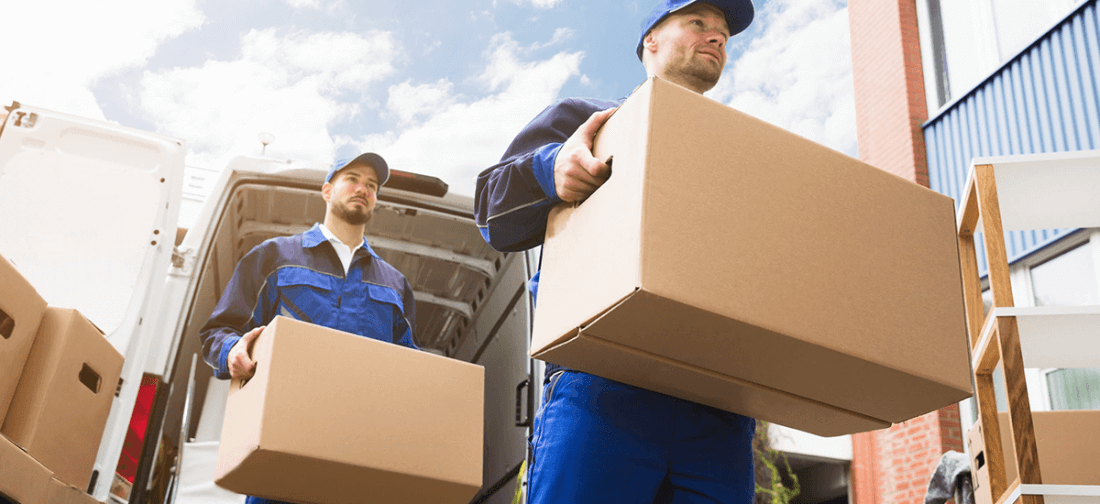

Create a Moving Budget Before the Relocation Day Comes
As you probably figured out by now, moving is a pricey adventure. There are many costs and many variables that affect the final calculation. If you want to avoid any sudden expenses, you should create a financial plan. Once you have in writing all the expenses, you will have the opportunity to find ways to save some money before the relocation day approaches.
The first thing you should do is create a budget template. It should have columns with categories that will help you organize your costs.
One of the best tips when it comes to costs is to make a financial plan according to the way you decide to move. Depending on whether you’re relocating by yourself or using professional moving services, you will have different expenses:
- Moving by yourself entails costs of renting a truck, and getting insurance for it. Have in mind that you will need money for gas and mileage. Check with a renting company if you will have unlimited mileage. The same goes for equipment that comes with a rented truck. Many firms include ramps, dollies, and covers that protect your items. Having those included knocks off a couple of dollars off your final price.
- Hiring a moving company for a any move is smart, especially if you have a big house filled with items that you want to transport. Get a quote from a few different firms before you decide on one. Companies offer extra services like packing and unpacking and auto transport and these can be related to the final price. You should check for additional charges and include them in your budget. If you’re moving in the summer, you can expect higher prices compared to relocating during the holidays
- Packing supplies should be included on your budget list. You may have to obtain everything from boxes to furniture covers and other supplies. Some of these materials you can also find for free and save up a little bit of money.
- Real estate costs – when renting or buying a new home, there are many documents to be put in order and many fees to pay. You should hire a home inspection to check on the condition of your new home. Cleaning and repairing might be needed. If you are renting a place, the deposit should be included in the budget list.
- Sometimes we cannot bring all of the items we want with us. That is why you should calculate the cost of storage facilityinto your bill. It should include insurance, as well as the cost of moving to and from the location.
- When you finally arrive at your new home, you will be in charge of setting up utility services. Put cable TV and internet on your list as well. Create a list of items you will need, make sure that you put them in order of necessity. If you can go by without them in the first week after the move, you can just buy them later.
Making a budget list can be overwhelming. And there will always be some uncalculated expenses and some unexpected situations. Stick to your budget but don’t be surprised if you correct it at one point.


Know the Average Moving-Related Costs
To give you a basic idea of how much money you will have to put aside for your relocation, we would like to share an average estimate of the costs you will have to include in your budget.
If the distance between your old and your new place is around 1.000 miles, you can pay anywhere from $900-1.200 for a one-bedroom and up to $6.000 for a four-bedroom apartment.
These are some of the costs that you will have to cover regardless of whether you hire professional movers to help you or not:
- Packing materials – $35 -105
- Packing boxes – $190-605
- Plastic boxes – $65-405
- Shipping a car – $500-1.400
- Moving permit – $20-80
- Pet boarding – $25-45 per night
If you decide to move on your own, there are transport expenses:
- Truck rental – $500-3.000
- Gas costs – $200-600
- Moving truck insurance – $5-40 per day
- Vehicle towing – $130-350
You have a few options if you decide to hire relocation experts, and depending on the service you choose, these are the expenses:
- Basic moving service that does not include packing – $2.000-7.500
- Packing service – $500-4.000
- Moving specialty items – $50-450 per item
- Released value protection – $0.60 per pound
- Full value protection 1% of the total estimated value of your belongings


How Much Money It Takes to Rent a Storage
If you are renting storage space for the stuff that won’t go into your home straight away, you are surely wondering how much money you will have to put aside for it? The answer to that depends on many factors such as time, size, and special conditions of storage space.
Companies that provide storage services, more often than not offer a variety of storage sizes. It is only logical that the bigger the space, the higher the price will be. Extra small storage, size 5′ x 5′, costs between $30 and $100. Those with 5′ x 10′ size are between $45 and $140. If you require a place to keep extra furniture you have, a 10′ x 10′ unit is for you, and it can be available for a price range of $65 to $200. Large and extra-large spaces go for $85 to even $425, depending on the size.
In addition to size, time is another crucial factor that can impact storage prices. Longer rentals are cheaper than short-term ones. The longer you keep your items in storage, there is a bigger chance that the company that provides these services will offer you a discount. Besides, some relocation firms offer the possibility of using their storage facilities free of charge for the first month.
When thinking about the price of the storage unit, you should take into account climate control. Adding this type of feature can increase the overall price, but it will protect your items from cold or hot weather.
Companies that provide storing services usually require you to insure your items before putting them in the storage. Don’t forget to add up an insurance cost to your final storage price.
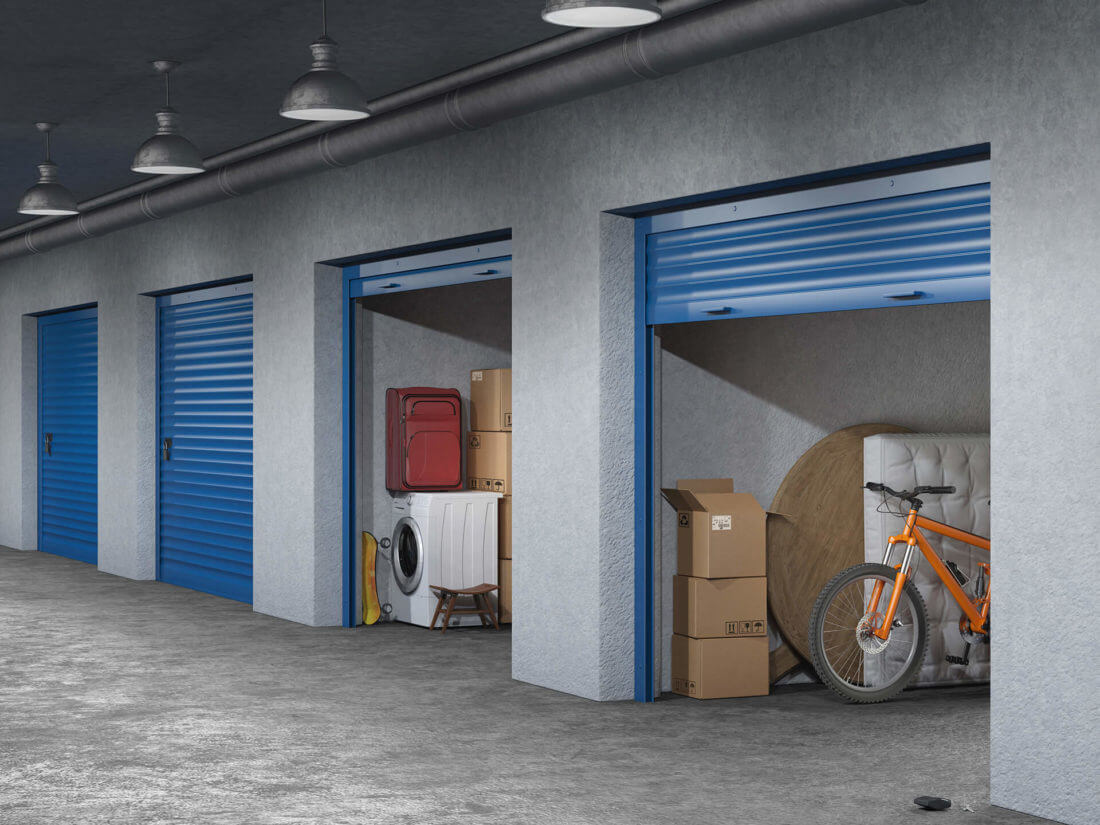

Get Boxes and Other Packing Supplies
The most important thing with getting packing supplies is knowing how much you need. If you get more than you require, there is a chance that stores will let you just return the items you haven’t used. But having fewer supplies might cause delays in your packing schedule and additional relocation anxiety.
When preparing your items for transport, you should think about all the different supplies you can use to ensure their safety. Boxes are widely used in the process of relocation and can be described as the most popular moving supply. But if you are running on a tight budget and want to save some money, finding cheap or free boxes is one way to do it. There are many places where you can find free crates:
- Call friends – start with basics, call friends and family to check if they have some free containers.
- Scroll through Craigslist – there you will find crates of any shapes and sizes
- Visit liquor stores – shipping bottles entails sturdier packages. This is the place you should visit to get safer containers for your more fragile items.
- Bookstores – books are transported in sturdy boxes, have this in mind if you have a bookstore nearby. This can come in handy if you have breakable valuables.
- Coffee shops are great places to get some small containers. Coffee, filters, and cream are all delivered in those on a weekly basis.
- Apps and online community groups are an excellent way for you to obtain some free carton. Join some online groups, download apps, and check out the offer in your town.
- Big companies like Walmart, Target, and Costco have all sizes, shapes, and types of containers. Their, mostly weekly deliveries, are a gold mine for all that are in need of free supplies.
Picking the right packaging materials is what differs successful shipping from a failed one. Fragile items are more likely to get broken if not wrapped and appropriately packed. When choosing the right materials, factors like weight, value, and shipping conditions should be taken into consideration.
- Sealing materials – first in the group of these are stretch foils that keep items firmly pressed together. Lowering object mobility is what keeps them from bumping into one another. Shrink foil heats when it’s wrapped around the object, causing it to melt.
- Plastic bags come in many sizes, with different closing mechanisms. Foam-in-bags are specifically created to protect items as they automatically inflate.
- Paper is cheap, environmentally friendly, and it has extensive use when it comes to packing. Depending on your needs, you can use a wide range of paper, thinner or stronger.
- If you want to fill containers with items like TV, gaming consoles, fragile items, you should use styrofoam or polystyrene. They are both durable and light materials.
- Foam peanuts are loose-fill padding and cushioning material, mostly used for filling the voids and empty spaces in packaging containers. They are light and eco-friendly.
- Wood and paper wool are used as padding material as well.
- Silica gel grains can be found in tiny bags in shoe boxes. They have a high degree of wetness absorption, which is why they are placed in containers that travel long distances.
- Bubble wrap is put around easily breakable items for better protection. It can be reused, making it a sustainable packing material.
- Foam wrap is put around delicate objects before they are safely positioned in the box. This is an elastic material that can be wrapped around an object of any shape.
- Duct tape. Don’t cheap out on duct tape. You should have a high-quality one that you can trust to keep your boxes sealed tightly.
- Markers. Finally, you’ll use markers to label your boxes after sealing them.
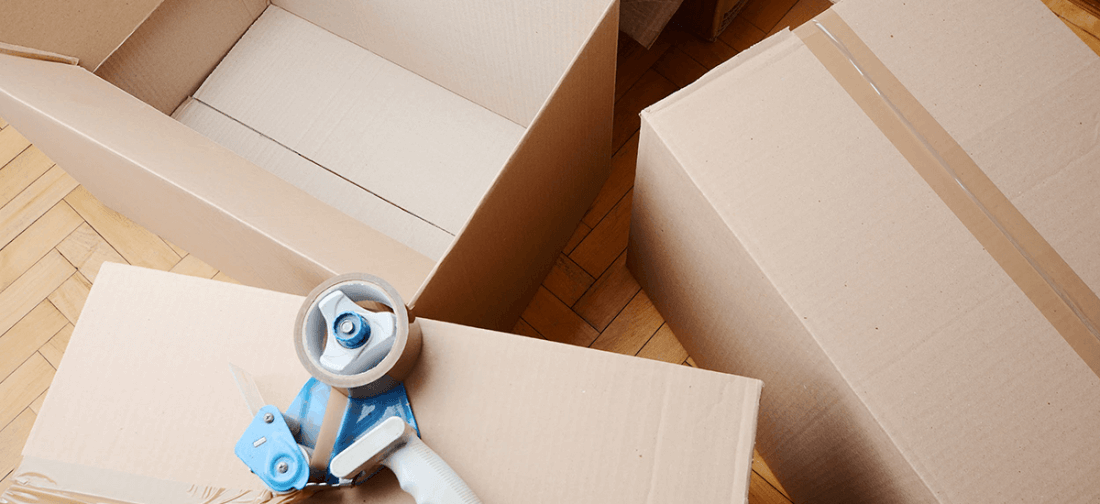

Learn How to Pack Stuff for Your New Home – Best Tips and Tricks
Packing is hands-down one of the most demanding tasks in a moving process. It might seem like a fun opportunity to dig up belongings you completely forgot about and take a walk down memory lane, but then you’ll realize that you’ve wasted hours looking at old photos instead of placing them in boxes. So, to make sure that your packing mission is a success, it is crucial to approach it strategically. Here are some tips and tricks to help you do so.
The first thing to do is to create a checklist. It would probably be best if you went room by room and simply wrote down everything you see. This includes everything from furniture, to clothes, accessories, and electronics. The more detailed your checklist, the better. The point of this list is to make it easier for you to keep track of what you’ve already packed, what you should tackle later, as well as how much more time you’ll spend to wrap it all up.
Our second important tip to keep in mind is that you shouldn’t ship absolutely everything to your new home. As you’re going through your belongings, set aside those items that you never really use. We all have clothes we’ve never worn (nor are we planning to), books we grew out of and don’t need, or jewelry that is simply not our style anymore. Put such things in one pile and just don’t pack it. It’s that easy. A great way to get rid of the excess stuff and earn some money is to throw a garage sale or you could donate it to a charity organization. It might be also useful to figure out how to dispose of unwanted appliances.
Also, keep in mind the items that the transport firms are not allowed to transport (the non-allowable items), such as hazardous materials, perishables, and personal and sentimental belongings.
Now that you have a checklist of things you need to pack (and a pile of things you don’t), it is time to get all the necessary supplies we’ve mentioned earlier. And once you get everything you need, it’s time to pack! A great way to put some weight off your shoulders is to invite friends and family over and throw an amazing packing party.
Before placing your belongings in boxes, line each box with a layer of protective paper. Then, wrap each individual item in a protective layer and place it in an appropriately sized box. Once you’re done loading the box, fill the remaining empty space with peanuts or crumpled paper. Close the box and shake it lightly to make sure nothing is shifting inside. Seal the box and secure all its edges with duct tape. Remember to take special care when transporting large and bulky items such as grandfather clocks. Lastly, label each box – write down its contents on at least three different sides.
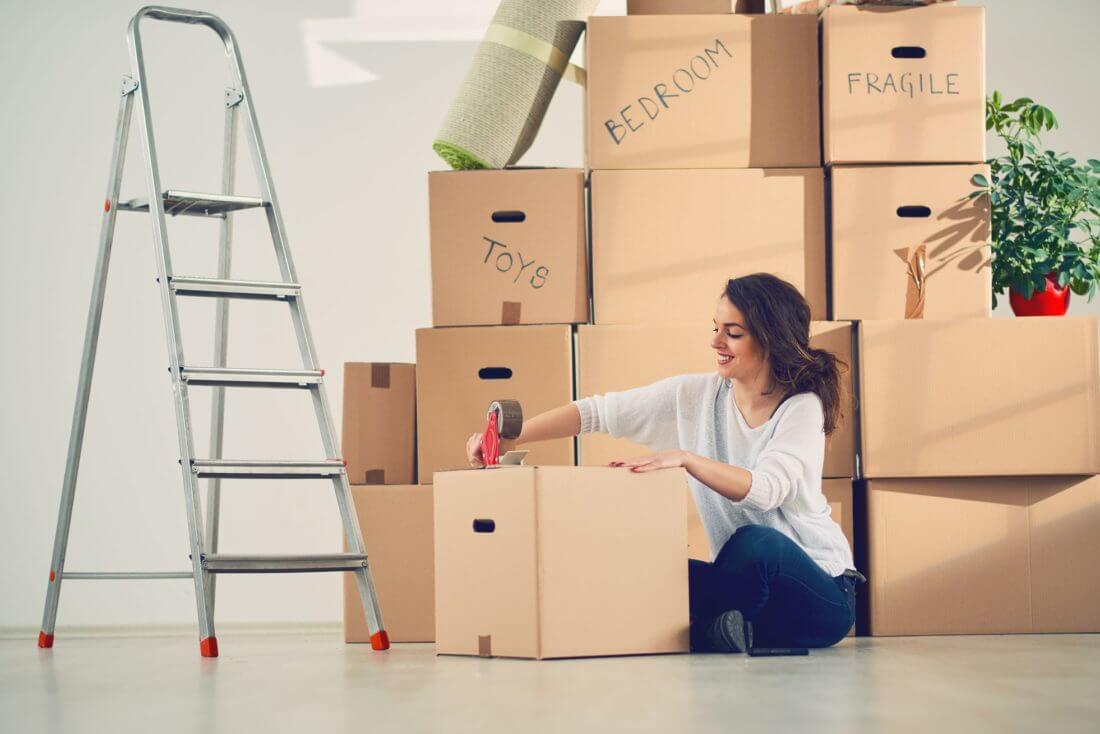

How to Pack Fragile Items from Your House into Boxes Without a Struggle
While the above-mentioned tips and tricks will do the job for most items in an average home, some more fragile objects will require special care and attention. That is, you can’t simply stack crystal glasses in a box, fill it with peanuts, and call it a day. So, let us share more tips to help you with these belongings.
You need to be sure that every individual glass is wrapped in a thick layer of bubble wrap. Additionally, you may want to use specialized compartmentalized boxes for such items.
The general rule for packing fragile items is that you should add an extra layer of protection wherever you can. Bubble wrap will be your best friend when the time comes to pack dishes, glass items, artwork, mirrors, fine china, and so on. In addition to that, always use the original box that the item came in if you still have it. Such boxes are designed especially for the contents they held, which means that they have the perfect dimensions and level of sturdiness required to keep them safe.
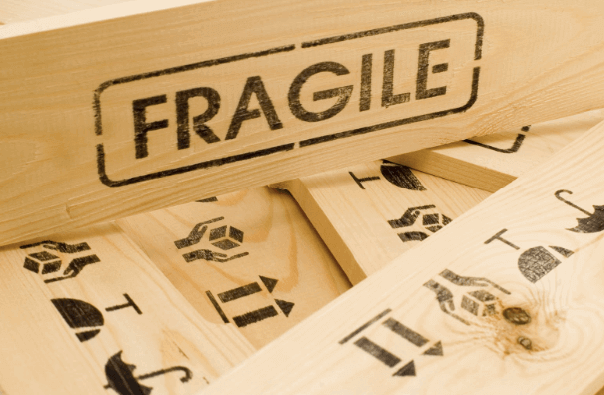

Obtain Moving In Essentials
Before reaching your new place of residence, you must keep in mind the essential things that you will need immediately upon arrival. Depending on the distance and time of the arrival, your essentials may differ slightly, but the bottom line is that the first things to unpack will be the cleaning supplies, toiletries and bed linen. Not to forget the inevitable mobile phones and chargers, but also essential medications. If you need to change the lock, pack it first.
Start with the cleaning supplies, since dirt and dust will certainly be covering your new living space as the movers keep coming in and out of the rooms. So, prepare paper towels and cleaning spray, sponges, dust cloths, vacuum cleaner, broom and dustpan, toilet brush and plunger, trash can and bags, laundry detergent and rubber gloves.
Then get toiletries such as:
- hand soap
- shower gel
- hand bath towels
- toilet paper
- shower curtain with a rod
- hanging rings
- toothbrushes
- toothbrush holder
- toothpaste
Make sure the hairdryer is also within reach, as well as a first aid kit.
Now proceed with packing the bedroom essentials. You will assemble the bed first so you’ll need the basic toolkit. Then follow with:
- mattress
- bed linen
- comforter
- duvet cover
- pillows
- nightstand
- lamp
- iron and ironing board
- closet and hangers
Make sure you put pajamas, slippers and spare clothes in as well. In the following couple of days, you will need a dresser, under the bed storage and other creative storage ideas to be able to unpack your clothes.
Kitchen essentials would include:
- water
- snacks
- some cookies
- fruit
- dish soap
- dishcloths
- basic utensils and cutlery
- essential appliances
If your new destination is far away, you can pack everything that can be spoiled in a cooler. Make sure the glasses and a few plates are within reach. Finally, you will need a step stool to unpack the rest of your belongings.


Clean and Prepare Your New Home
Before your boxes and furniture arrive at your future address, there are certain steps you should take to prepare your new home. Here are some things you should take care of:
- Set up a security system. Setting up a door alarm and, depending on your preferences and your state’s laws, video surveillance is an important first step to making your home move-in ready.
- Change the locks. Yes, you have the keys to the place now. But the truth is, you can’t know for sure who else has them. Maybe the previous owner gave a set to a friend or family member and forgot about it. In any case, you should change all locks to avoid any unpleasant situations.
- Clean thoroughly. Of course, your house or apartment should be completely clean before you put in furniture. It will be much harder to vacuum and dust with all those boxes scattered around every room.
- Set up utilities. Of course, this step is absolutely crucial in order to enable you to move in properly. Without at least basic utilities such as water and electricity set up, it would be almost impossible to settle down.
- Make sure everything works. Fixing leakages, getting rid of mold and water damage, and changing pipes is much easier when there aren’t any household items there. So before you move in, check if there is anything that needs fixing. If so, get it fixed right away.
- Improve your home. While you’re settling in, why not do some remodeling that can style your place and even help you in many ways. Getting a great water heater or even a tankless heater for your bathroom can significantly reduce your costs and help you save some money.
- Get insurance. Needless to say, getting an insurance plan for your home is a must, even if you’re moving to the safest place in the world.


Get to Know Your New Neighborhood
When you move into your new home, there will probably be people looking at who is settling in their neighborhood. A first step in meeting your neighbors is just to smile at them and introducing yourself. That is the easiest way to establish communication which will later prove to be very helpful since you need some insight into your new environment. When you have settled in, there will be other opportunities to start the conversation such as walking the dog, playing with your kids or picking up the mail.
Then, after you have really finished all the relocation activities, a good way to make friends in a new city is to throw an introduction party. Invite your neighbors with their kids, so all of your family gets a chance to blend in.
After that, the next option is to join community groups and attend events together. While at it, ask your neighbors to recommend a restaurant, a sports club or a class at the community center and start exploring the area. You have to figure out where the essential services are, such as the emergency room, mechanic, dentist, pharmacy, school, etc. Also, inquire about the babysitter, dog walker, post office and other usual services that will make your life easier. The neighbors will be more than willing to assist you as it is in their best interest as well to establish a good relationship with their new neighbors. Basically, a win-win situation.
After the basics, move on to inquire about entertainment options. Ask your neighbors to suggest the best live music venue or picnic area. After you have visited the place, follow up on that share your impressions.
It is important to go out and spend time outside the house because you will not be meeting anyone inside. Try to expand the network of acquaintances and try to be helpful yourself. Offer your neighbors help with carrying groceries if they are elderly or just clean the walkways together after a storm or heavy snow. If they need some assistance that is within your professional expertise, offer it. It will not go unrewarded and unnoticed.


Find the Right Moving Company
Even with the best organization, moving can be stressful, but that can all be avoided by hiring hassle-free movers to do it for you. However, finding the right ones is not easy while hiring bad ones could spoil the entire relocation experience or worse, lead to some broken or lost items. To avoid this, you should make a list of potential companies to narrow down the search.
Ask your family members, colleagues, or friends for recommendations. If they don’t have any, you can check the American Moving and Storage Association. Search through online reviews to see what their previous customers said. Look through trusted sites like Google, Yelp or BetterBureau to get an unbiased review of the company. This way, you can check if the company is legitimate or not and avoid getting scammed.
Always keep a lookout for any red flags. A reputable company won’t ask for a cash deposit, so if it seems like the company is hungry for money and wants it upfront, don’t trust them. While you’re talking with them, check their level of professionalism – if they are late or can’t answer any of your questions, avoid them. The minute you see anything suspicious or something you don’t like – look for another company.
Also, make sure that the company is licensed and insured. Each company must have a license from the US Department of Transportation Federal Motor Carrier Safety Administration.
After filtering out the companies, contact the ones you like and believe to be trustworthy. Get quotes from several companies (it’s recommended to get quotes from at least three). Inquire about all the services and make sure you check what is included in the price and ask about any additional costs that can happen.
When you’ve gathered all the needed information, determine the value each of the companies has, and the prices they offer to find your perfect balance. Consider their reputation, price and what’s included in their moving services. Carefully read your contract and make sure that they make an inventory of your belongings so they will know what they are transporting. And get everything in writing – never sign a blank contract!






